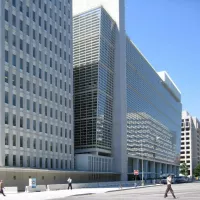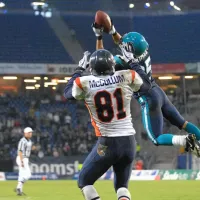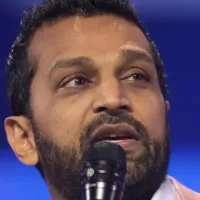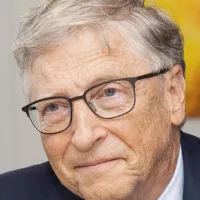Mali, officially the Republic of Mali, is a landlocked country in West Africa and the eighth-largest country in Africa. It shares borders with Algeria, Niger, Mauritania, Burkina Faso, Ivory Coast, Guinea, and Senegal. Its population is estimated at 23.29 million, with a significant portion under the age of 15. Bamako serves as its capital and largest city. While it has 13 official languages, Bambara is the most widely spoken.
1905: French Control Established
By 1905, most of the area of Mali was under firm French control as a part of French Sudan.
November 1915: Anti-French Uprising
In November 1915, a large anti-French uprising broke out among the tribes in the regions of present-day Mali and Burkina Faso.
September 1916: Uprising Suppressed
In September 1916, the last resistance of the anti-French uprising was suppressed and over 100 villages were destroyed by French colonial troops.
November 1958: French Sudan Becomes Autonomous
On 24 November 1958, French Sudan became an autonomous republic within the French Community and changed its name to the Sudanese Republic.
January 1959: Mali Federation Formed
In January 1959, Mali and Senegal united to become the Mali Federation.
June 1960: Mali Federation Gains Independence
On 20 June 1960, the Mali Federation gained independence from France.
August 1960: Senegal Withdraws from Federation
In August 1960, Senegal withdrew from the Mali Federation.
September 1960: Republic of Mali Established
On 22 September 1960, the Sudanese Republic became the independent Republic of Mali, marking the country's Independence Day.
1960: Independence and Republic Establishment
In 1960, Mali achieved independence after a brief federation with Senegal as the Sudanese Republic. Following Senegal's withdrawal, the Republic of Mali was established.
1960: Keïta's Policies and Population
In 1960, Modibo Keïta established a one-party state with socialist policies, nationalizing economic resources. The population of Mali was reported to be about 4.1 million.
1962: Connection with French Government
Since 1962 (creation of BCEAO) Mali is connected with the French government by agreement in the "Franc Zone" (Zone Franc), which means that it uses the CFA franc.
November 1968: Military Coup by Traoré
On 19 November 1968, the Keïta regime was overthrown in a bloodless military coup led by Moussa Traoré, now commemorated as Liberation Day.
1968: Drought Begins
In 1968, a devastating drought began in Mali, lasting until 1974.
1968: Prix Renaudot Won by Yambo Ouologuem
Yambo Ouologuem's novel, Le devoir de violence, won the 1968 Prix Renaudot, but its legacy was later marred by accusations of plagiarism.
1974: Drought Ends
In 1974, a devastating drought that started in 1968 ended in Mali, but not before famine killed thousands of people.
1982: Mali's Population in 1982
Mali's population grew from 7.7 million in 1982 to 19.9 million in 2018.
1988: Economic Reform Begins
Mali underwent economic reform, beginning in 1988 by signing agreements with the World Bank and the International Monetary Fund.
1990: Opposition Movements Emerge
In 1990, cohesive opposition movements began to emerge in Mali, complicated by ethnic violence in the north.
January 1991: Student Protests Suppressed
In January 1991, peaceful student protests were brutally suppressed in Mali, leading to mass arrests and torture.
March 1991: Clash and Massacre
26 March 1991 marks the day when a clash between military soldiers and peaceful demonstrating students culminated in the massacre of dozens under the orders of Traoré. It is now a national holiday.
March 1991: Mass Pro-Democracy Rallies
From 22 March through 26 March 1991, mass pro-democracy rallies and a nationwide strike, known as "les évenements" or the March Revolution, took place in Mali.
1991: Coup and New Constitution
In 1991, a coup in Mali led to the adoption of a new constitution and the establishment of Mali as a democratic, multi-party state.
1991: Legalization of Opposition Parties
In 1991, opposition parties were legalized in Mali, a transitional government was formed, and a national congress drafted a new democratic constitution.
1991: Relaxation of Mining Codes
In 1991, with the assistance of the International Development Association, Mali relaxed the enforcement of mining codes which led to renewed foreign interest and investment in the mining industry.
January 1992: Constitution of Mali
Until the military coup of 22 March 2012, Mali was a constitutional democracy governed by the Constitution of 12 January 1992, which was amended in 1999.
1992: Implementation of Economic Adjustment Programme
Between 1992 and 1995, Mali implemented an economic adjustment programme that resulted in economic growth and a reduction in financial imbalances.
1992: Konaré Wins Presidential Election
In 1992, Alpha Oumar Konaré won Mali's first democratic, multi-party presidential election.
May 1995: Mali Joins the WTO
Mali implemented an economic adjustment programme that increased social and economic conditions, and led to Mali joining the World Trade Organization on 31 May 1995.
1996: Government Reforms Public Enterprises
During 1988 to 1996, Mali's government largely reformed public enterprises. Since the agreement, sixteen enterprises were privatized, 12 partially privatized, and 20 liquidated.
1997: Konaré Re-elected
In 1997, Alpha Oumar Konaré was re-elected for a second term as president of Mali.
1999: Gold as Leading Export
The emergence of gold as Mali's leading export product since 1999 has helped mitigate some of the negative impact of the cotton and Ivory Coast crises.
1999: Amendment of the Constitution
Until the military coup of 22 March 2012, Mali was a constitutional democracy governed by the Constitution of 12 January 1992, which was amended in 1999.
2000: Access to Safe Drinking Water
In 2000, it was estimated that 62–65% of the population in Mali had access to safe drinking water.
2001: Female Genital Mutilation Data
An estimated 85%–91% of Mali's girls and women have had female genital mutilation in 2001.
2001: Government Expenditures on Health
In 2001, the general government expenditures on health in Mali totaled about US$4 per capita at an average exchange rate.
2002: Mali Hosted the African Cup of Nations
Association football became more prominent in Mali after the country hosted the 2002 African Cup of Nations.
2002: Cotton Production
During 2002, 620,000 tons of cotton were produced in Mali.
2002: Hydroelectric Power Production
In 2002, 700 GWh of hydroelectric power were produced in Mali.
2002: Touré Elected
In 2002, Amadou Toumani Touré was elected as president of Mali.
2002: GDP Amounted to US$3.4 Billion
In 2002, Mali's gross domestic product (GDP) amounted to US$3.4 billion.
2002: Predominantly Rural Population
In 2002, the population is predominantly rural (68%).
2002: Improved Relations with the West
Since the institution of a democratic form of government in 2002, Mali's relations with the West in general and with the United States in particular have improved significantly.
2003: Decline in Cotton Prices
During 2002, 620,000 tons of cotton were produced in Mali but cotton prices declined significantly in 2003.
2005: GDP Amounted to US$5.8 Billion
In 2005, Mali's gross domestic product (GDP) increased to US$5.8 billion, which amounts to an approximately 17.6% annual growth rate.
2005: Railroad Company Conceded
In 2005, the Malian government conceded a railroad company to the Savage Corporation.
2006: Female Genital Mutilation Data
An estimated 85%–91% of Mali's girls and women have had female genital mutilation in 2006.
2007: National Assembly Elections
Following the 2007 elections, the Alliance for Democracy and Progress held 113 of 160 seats in the National Assembly.
2008: Mali Women's Basketball Team at Beijing Olympics
The Mali women's national basketball team, led by Hamchetou Maiga, competed at the 2008 Beijing Olympics.
2008: Expected Privatization of Major Companies
Two major companies, Societé de Telecommunications du Mali (SOTELMA) and the Cotton Ginning Company (CMDT), were expected to be privatized in 2008.
2009: Languages Spoken Natively in Mali
According to the 2009 census, the languages spoken natively in Mali included Bambara by 51.5%, Fula (8.3%), Dogon (6.6%), and Soninké (5.7%). Other languages were also spoken by smaller percentages of the population.
2010: Women in Parliament
In 2010, out of 147 members of Parliament in Mali, 15 were women.
January 2012: Tuareg Rebellion Begins
In January 2012, a Tuareg rebellion began in northern Mali, led by the National Movement for the Liberation of Azawad (MNLA).
March 2012: Military Coup
In March 2012, a military coup complicated the ongoing conflict in northern Mali.
2012: Imposition of Sharia Rule and Christian Persecution
After the 2012 imposition of sharia rule in northern Mali, the country was ranked high (number 7) in the Christian persecution index published by Open Doors, which described the persecution in the north as severe.
2012: Identification of a further uranium mineralized north zone
In 2012, a further uranium mineralized north zone was identified in Mali.
2012: Increased Kidnappings and Rapes
In 2012, the conflict in the Northern part of Mali increased cases of kidnappings and rapes, reducing women's access to resources, economy, and opportunities.
2012: Tuareg Rebellion and Slavery
In the Tuareg Rebellion of 2012, ex-slaves were a vulnerable population with reports of some slaves being recaptured by their former masters. Slavery still persists in Mali today.
2012: Suspension from African Union
Mali was active in regional organizations such as the African Union until its suspension over the 2012 Malian coup d'état.
January 2013: Operation Serval Launched
In January 2013, the French military launched Operation Serval in response to territorial gains by rebels in northern Mali.
January 2013: French Intervention
On 11 January 2013, the French Armed Forces intervened in Mali at the request of the interim government.
July 2013: Presidential Elections
Presidential elections were held in Mali on 28 July 2013, followed by a second-round run-off on 11 August.
August 2013: Keita Elected President
In August 2013, Ibrahim Boubacar Keita was elected as the new president of Mali.
December 2013: Legislative Elections
In December 2013, legislative elections were held in Mali, concluding on the 15th of the month.
2013: Defense Accords Concluded with France
In 2013, defense accords were concluded with France, but on 2 May 2022, the military government announced breaking them, further deteriorating Malian–French relations.
2013: Beliefs about Physical Harm towards Women
The Demographic Health Survey for Mali in 2013 stated that 76% of women and 54% of men believed physical harm towards women was acceptable in certain situations.
2015: Threat to Peace Agreement
A UN panel reported that in the first three months of 2022, the 2015 peace agreement between the government and pro-independence groups was threatened by a potential risk of confrontation for the first time in five years.
2015: Gold Production
In 2015, the country produced 41 metric tonnes of gold.
2015: Escalating Conflict in Mopti
Since 2015, conflict has escalated in the central Mali province of Mopti between agricultural and pastoral communities.
January 2016: Implementation of New Regions
Since January 2016, implementation of the two newest regions, Taoudénit and Ménaka has been ongoing; a governor and transitional council has been appointed for both regions.
2016: Dogon Militia Formed
In 2016, the Dogon group Dan Na Ambassagou was created as a militia in Mali.
2016: Decentralization Efforts
The initiative to add nine new regions continues the decentralization efforts that began with the creation of the Taoudénit and Ménaka regions in 2016.
2017: Mali's Gender Inequality Index Ranking
In 2017, Mali ranked 157th out of 160 countries in the gender inequality index as reported by the United Nations Development Programme. Despite constitutional protections, many laws discriminate against women.
2017: Primary School Enrolment Rate
In 2017, the primary school enrolment rate in Mali was 61%, with 65% of males and 58% of females enrolled. The education system faces challenges such as a lack of schools in rural areas and shortages of teachers and materials.
July 2018: Presidential Election First Round
In the 2018 Malian presidential election held on 29 July 2018, no candidate received more than 50% of the vote in the first round.
August 2018: Keïta Re-elected
In August 2018, Ibrahim Boubacar Keïta was re-elected as president of Mali with 67% of the vote in a runoff held on the 12th.
September 2018: Unilateral Ceasefire Negotiated
In September 2018, the Centre for Humanitarian Dialogue negotiated a unilateral ceasefire with Dan Na Ambassagou.
2018: Ethnic Groups in Mali
In 2018, the largest ethnic groups in Mali are Bambara (33.3%), Fulani (Peuhl) (13.3%), Sarakole/Soninke/Marka (9.8%), Senufo/Manianka (9.6%), Malinke (8.8%), Dogon (8.7%), Sonrai (5.9%), Bobo (2.1%), Tuareg/Bella (1.7%), other Malian (6%), from members of Economic Community of West Africa (0.4%), other (0.3%).
2018: Mali at the CAVB Beach Volleyball Continental Cup
Mali featured a men's national team in beach volleyball that competed at the 2018–2020 CAVB Beach Volleyball Continental Cup.
2018: Mali's Population in 2018
Mali's population grew from 7.7 million in 1982 to 19.9 million in 2018.
January 2019: Atrocities Against Civilians Documented
From January 2019 until November, Human Rights Watch documented atrocities against civilians in Central Mali, saying that at least 456 civilians were killed, while hundreds were injured.
March 2019: Massacre of Fula Villagers
In March 2019, the Dan Na Ambassagou group was blamed for the massacre of 160 Fula villagers on the 24th.
October 2019: Jihadist Attacks
During the first week of October 2019, two jihadist attacks in the towns of Boulikessi and Mondoro killed more than 25 Mali soldiers near the border with Burkina Faso.
November 2019: Indelimane Attack
On 1 November 2019, the IS-GS militants killed at least 50 soldiers in the 2019 Indelimane attack in the Ménaka Region of Mali.
2019: Forest Landscape Integrity Index Ranking
In 2019, the country had a Forest Landscape Integrity Index mean score of 7.16/10, ranking it 51st globally out of 172 countries.
2019: Attack on UN Base
In early 2019, Al Qaeda claimed responsibility for an attack on a United Nations base in Mali that killed 10 peacekeepers from Chad. 25 people were reported to have been injured in the attack.
February 2020: HRW Documents Atrocities
In February 2020, Human Rights Watch documented atrocities against civilians in Central Mali and said that at least 456 civilians were killed, while hundreds were injured from January 2019 until November.
June 2020: Popular Unrest
On 5 June 2020, popular unrest began following irregularities in the March and April parliamentary elections, including outrage against the kidnapping of opposition leader Soumaïla Cissé. Between 11 and 23 deaths followed protests that took place from 10 to 13 June.
August 2020: US Assistance to Mali
Before the August 2020 coup, U.S. foreign assistance to Mali exceeded $135 million in FY 2020, aiming to bolster fragile peace, democratic governance and regional security, while addressing social and economic vulnerabilities.
August 2020: Military Mutiny and Coup
On 18 August 2020, a military mutiny led by Colonel Assimi Goïta and Colonel-Major Ismaël Wagué resulted in the arrest of President Ibrahim Boubacar Keïta and Prime Minister Boubou Cissé, followed by Keïta's resignation. The National Committee for the Salvation of the People (CNSP) was formed, and a curfew was imposed.
September 2020: Political transition and inauguration
In September 2020, the CNSP agreed to an 18-month political transition to civilian rule. Shortly after in September 2020, Bah N'daw was named interim president, with Goïta being appointed vice president, and the government was inaugurated.
September 2020: Tensions After Handover of Power
Tensions between the civilian transitional government and the military ran high after the handover of power in September 2020.
2020: Displacement Due to Conflict
By 2020, more than 600,000 people had been displaced by the conflict in Mali.
2020: Coup Overthrows Government
In 2020, a coup led by Colonel Assimi Goïta overthrew the government of Mali.
2020: Mali at the CAVB Beach Volleyball Continental Cup
Mali's men's national beach volleyball team competed at the 2018–2020 CAVB Beach Volleyball Continental Cup.
January 2021: CNSP Disbanded
On 18 January 2021, the transitional government announced that the CNSP had been disbanded, almost four months after it had been promised under the initial agreement.
May 2021: Cabinet Reshuffle and Detentions
On 24 May 2021, after a cabinet reshuffle where two leaders of the 2020 military coup were replaced, key civilian leaders including President N'daw, Prime Minister Ouane, and Defence Minister Doucouré were detained in a military base.
June 2021: Goïta Sworn in as Interim President
On 7 June 2021, Mali's military commander Assimi Goïta was sworn into office as the new interim president.
2021: Mali's Population Estimated
In 2021, Mali's population was an estimated 21.9 million.
2021: Second Coup Led by Goïta
In 2021, a second coup led by Colonel Assimi Goïta further destabilized the government of Mali.
January 2022: Mali government announces Bambara as official language
In January 2022, the Mali government announced that Bambara would become the official language of the country, amidst deteriorating relations between Mali and the French government.
January 2022: Border Closure and Ambassador Recall
On 10 January 2022, Mali announced the closure of its borders and recalled several ambassadors to ECOWAS countries in response to sanctions placed on Mali for deferring elections for four years.
February 2022: French Ambassador Expelled; Troop Withdrawal Begins
In February 2022, France's ambassador was expelled from Mali, and France commenced the withdrawal of its troops from Mali, marking the end of Operation Barkhane.
February 2022: Election Timetable Pushed Back
The transition government pushed back the timetable for a new election, initially to be held in February 2022, to February 2024.
March 2022: Massacre of Civilians Alleged
According to Human Rights Watch, in March 2022, Malian troops and suspected Russian mercenaries from the Wagner Group executed around 300 civilian men in central Mali.
2022: Islamic State Gains Territory
In 2022, the Islamic State in the Greater Sahara saw major gains in the Mali War, occupying large swathes of territory in southeastern Mali. Ansongo and Tidermène were also captured by the group.
June 2023: French Removed as Official Language
In June 2023, with the approval of a new constitution by 97% of voters in a referendum conducted by the junta, Mali removed French as an official language.
July 2023: French dropped as official language in Mali
In July 2023, French was dropped as an official language in Mali, becoming instead a working language. At the same time, 13 national languages, including Bambara, Bobo, and Fula, became official languages.
September 2023: Attack on Niger River Vessel
On 7 September 2023, al-Qaeda linked JNIM militants attacked a vessel on the Niger River, resulting in the deaths of at least 154 civilians.
2023: Territorial Control Doubled
By mid-2023, the militant group Islamic State in the Greater Sahara had doubled the amount of territory it controlled since the overthrow of the previous government and establishment of the junta.
2023: Administrative Reorganization
Since 2023, Mali has added nine new regions to its administrative structure, bringing the total to 19 regions plus the district of Bamako. This reorganization aims to improve governance and bring public services closer to local populations.
February 2024: ECOWAS Agrees to Lift Sanctions
In exchange for the government's commitment to a 2024 election to be held in February, ECOWAS agreed to lift sanctions on the country.
July 2024: Battle of Tinzaouaten
In July 2024, CSP-DPA rebels and JNIM militants killed dozens of Russian mercenaries and Malian government forces during the Battle of Tinzaouaten.
August 2024: Severing Diplomatic Ties with Ukraine
On 5 August 2024, the Republic of Mali announced that it was severing diplomatic relations with Ukraine.
September 2024: Attacks Across Bamako
On 17 September 2024, al-Qaeda linked JNIM militants attacked several locations across Bamako, killing at least 77 people and injuring 255 others.
2024: Bill Criminalising Intimate Relations Between Same-Sex Couples Approved
In 2024, Mali officials approved a bill criminalising intimate relations between same-sex couples.
2024: Demographic Statistics
In 2024, about 47% of Malians were 14 years old or younger, 50% were 15–64 years old, and 3% were 65 and older. The median age was 16.4 years. The birth rate in 2024 was 40 births per 1,000, and the total fertility rate in 2024 was 5.35 children per woman. The death rate in 2024 was 8.1 deaths per 1,000. Life expectancy at birth was 63.2 years total (60.9 for males and 65.6 for females). Mali has one of the world's highest rates of infant mortality, with 57.4 deaths per 1,000 live births in 2024.
2024: Humanitarian Assistance Needed
In 2024, approximately 7.1 million people in Mali, including over 3.8 million children, require urgent humanitarian assistance due to escalating conflict and climate crises. UNICEF is appealing for $133.5 million to address these needs.
2024: Life Expectancy at Birth
In 2024, life expectancy at birth in Mali is estimated to be 63.2 years. The country faces significant health challenges related to poverty, malnutrition, and inadequate hygiene and sanitation.
2024: Mali Population
In 2024, the population of Mali is estimated to be about 23.29 million, with approximately 47.19% of the population under the age of 15.
2024: Global Innovation Index Ranking
Mali was ranked 136th out of 139 in the Global Innovation Index in 2024.
May 2025: Political Parties Dissolved
In May 2025, the military junta in Mali dissolved all political parties.
July 2025: Goïta Granted Five-Year Term
In July 2025, the transitional parliament in Mali granted Colonel Goïta a five-year presidential term, renewable without elections.
Mentioned in this timeline

Basketball is a team sport played on a rectangular court...
Ukraine is a large country in Eastern Europe second in...
Sudan officially the Republic of the Sudan is a country...

The World Bank is an international financial institution offering loans...

Football is a family of team sports primarily involving kicking...
France officially the French Republic is primarily located in Western...
Trending
Snoqualmie Pass is a mountain pass in Washington State serving as a crucial route for Interstate I- through the Cascade...

6 months ago Lexie Hull Highlighted by Caitlin Clark and Sophie Cunningham in WNBA News.
6 months ago Thiago Silva's Fluminense Contract, Champions History, and Career Milestone Explored.

28 days ago Louis Tomlinson donates $9k to ex-bodyguard for surgery: a heartfelt gesture.

29 days ago Nate Bargatze Plans Nashville Theme Park; Team Negotiates Site Locations

1 month ago Alex Caruso Praised as NBA's Best Defensive Disruptor; Wallace Observes Games
Popular

Candace Owens is an American conservative political commentator and author...

Tucker Carlson is an American conservative political commentator known for...

XXXTentacion born Jahseh Dwayne Ricardo Onfroy was a controversial yet...

Kashyap Pramod Patel is an American lawyer who became the...

Bill Gates an American businessman and philanthropist revolutionized personal computing...

Ilhan Omar is an American politician currently serving as the...